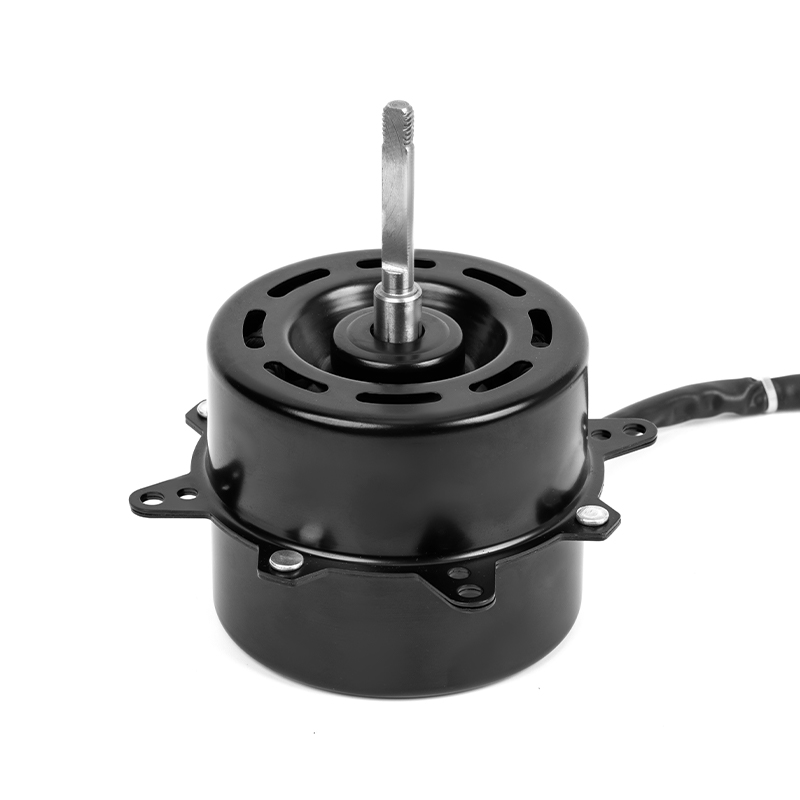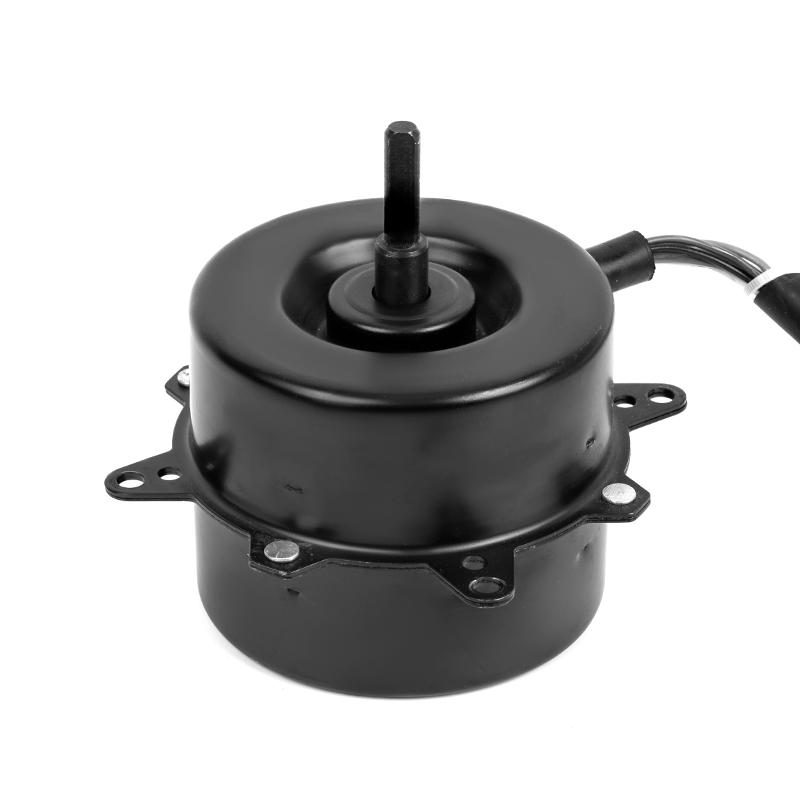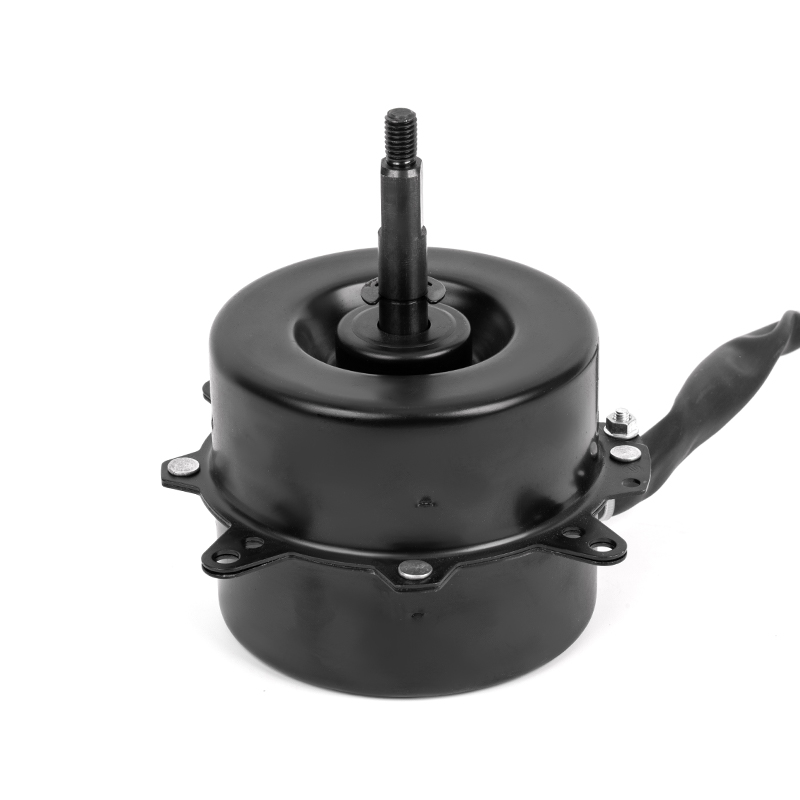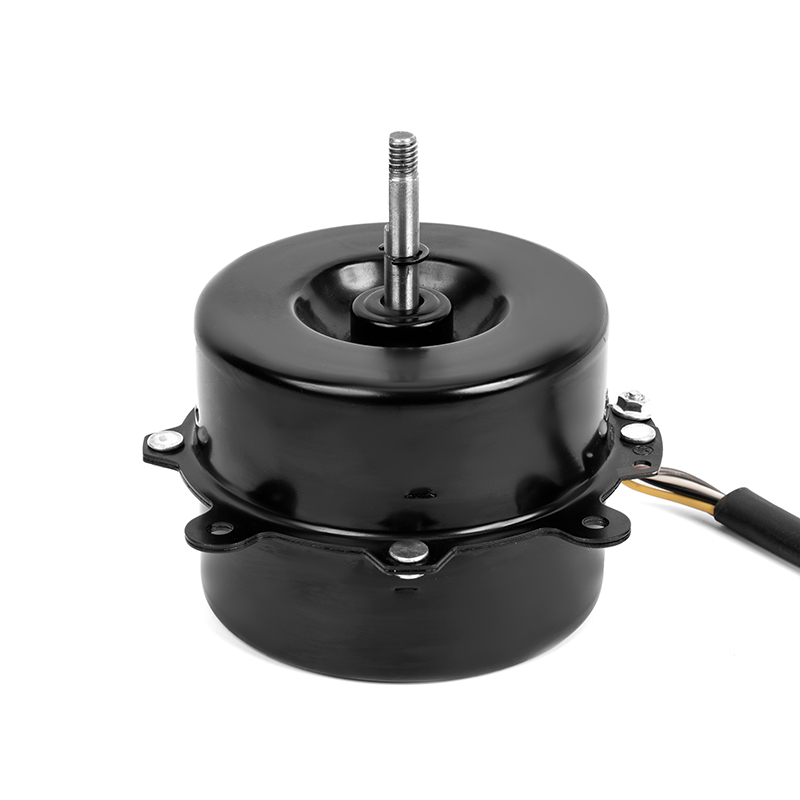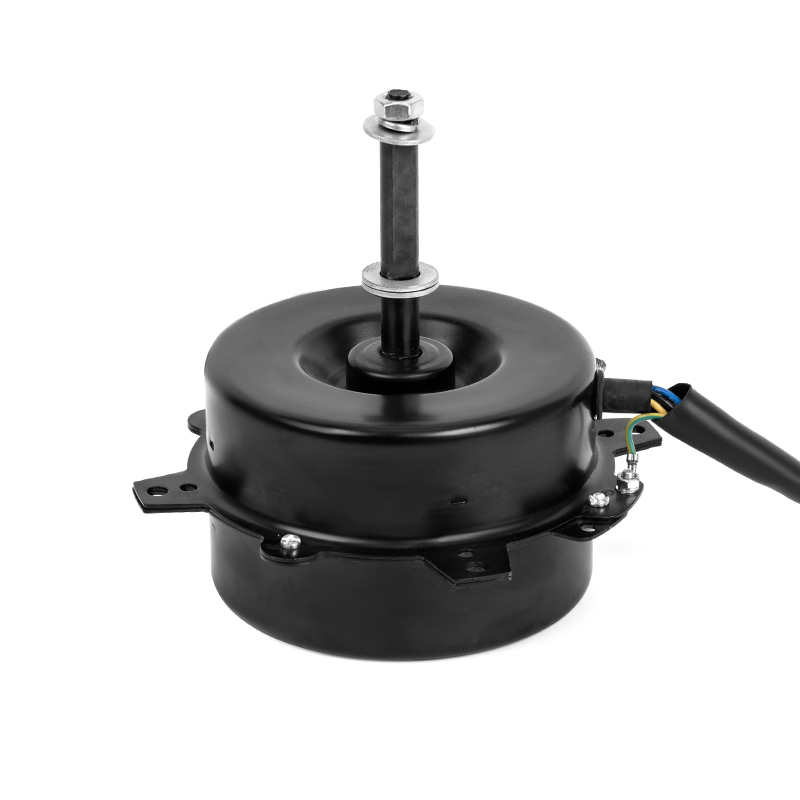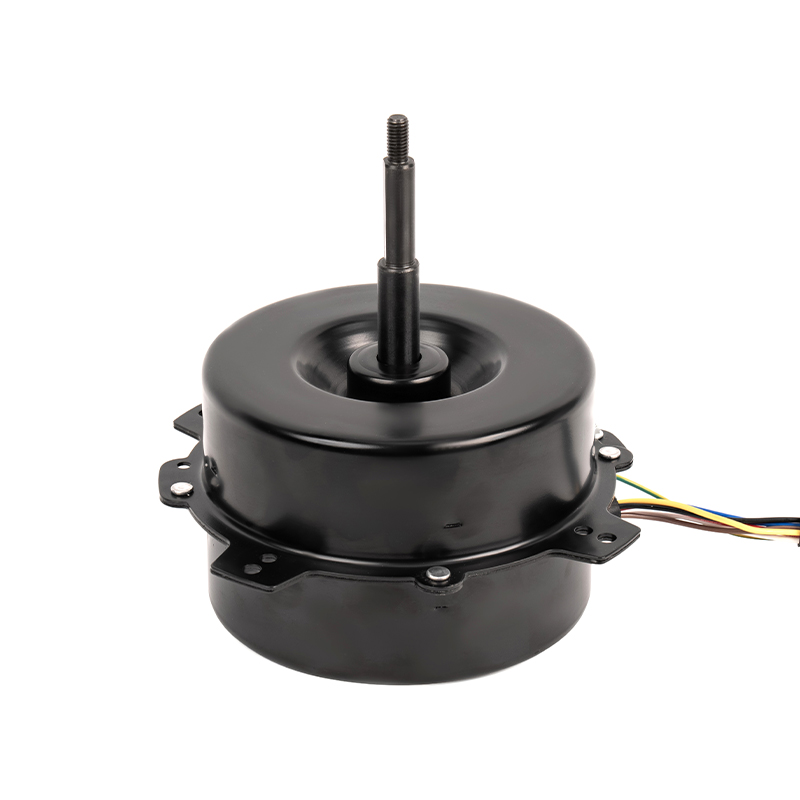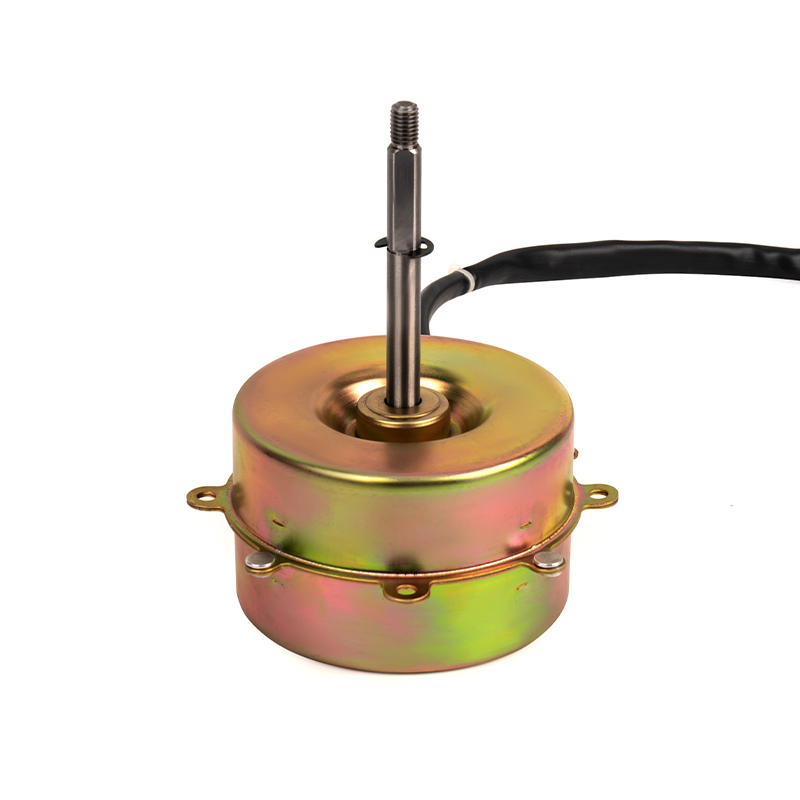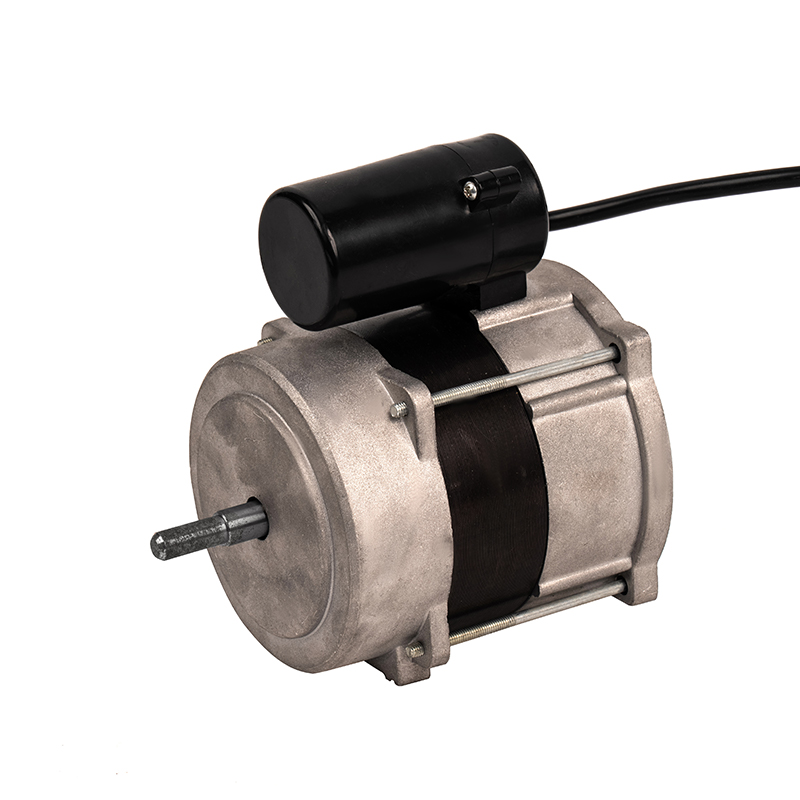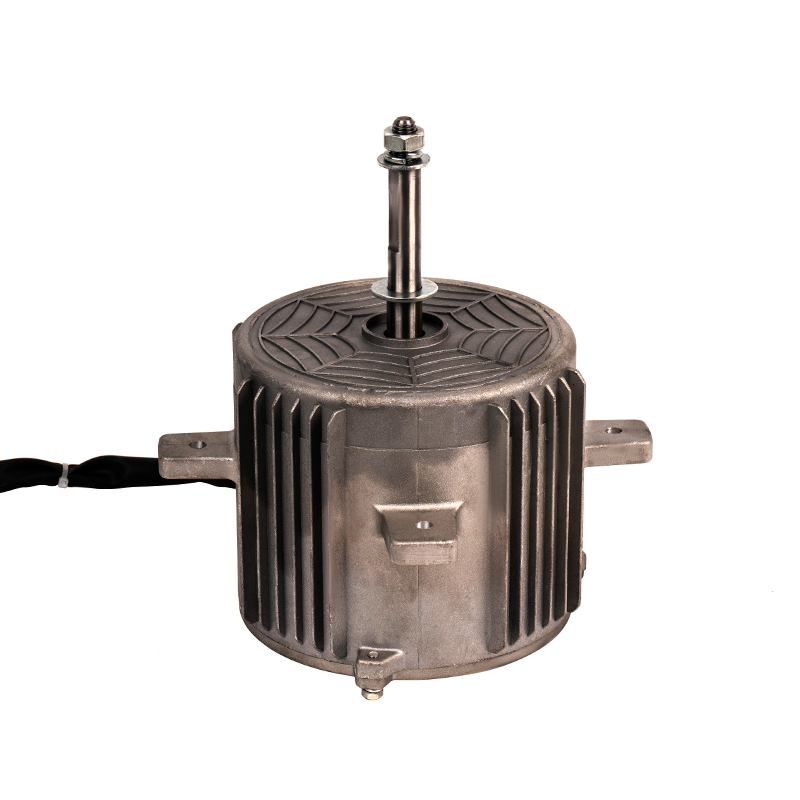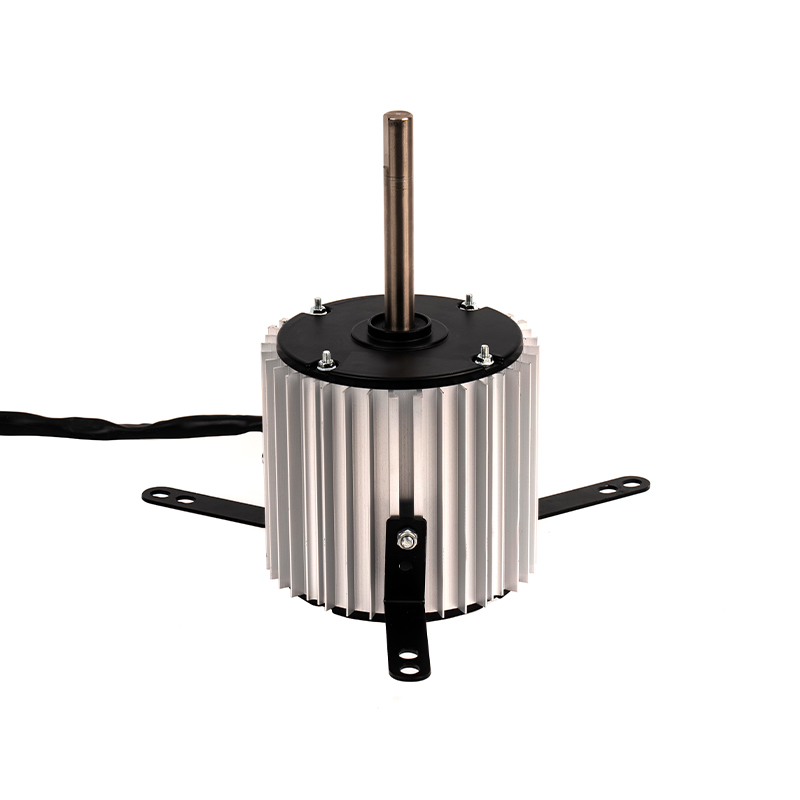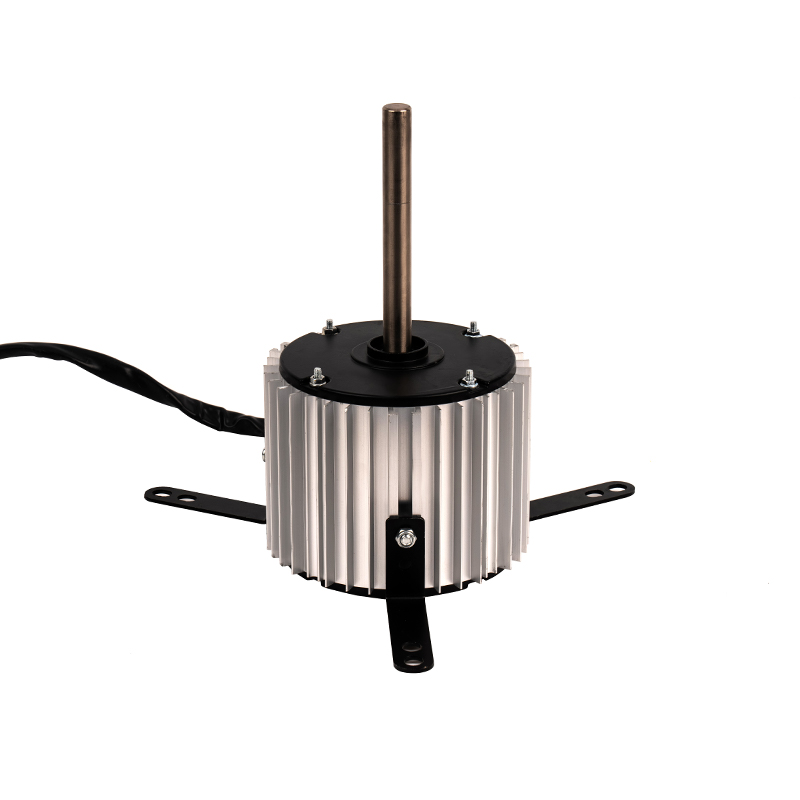1. Understanding the Role of Heating AC Motor in HVAC Systems
The Heating AC Motor plays a pivotal role in the operation of HVAC (Heating, Ventilation, and Air Conditioning) systems, functioning as the backbone of air circulation and temperature regulation. HVAC systems are complex units designed to control environmental conditions in residential, commercial, and industrial buildings. They include heating and cooling components, ventilation mechanisms, and air distribution systems, all of which require motors to operate efficiently. Among these, the Heating AC Motor ensures that the system's airflow and temperature regulation work smoothly, making it one of the most essential components of any HVAC system.
At its core, the Heating AC Motor is responsible for driving the fans, blowers, and compressors that circulate air through the HVAC system, facilitating both heating and cooling operations. These motors convert electrical energy into mechanical motion, which is necessary to move air across heat exchangers and evaporators. The heating and cooling processes themselves rely on the movement of air and the transfer of heat, and the Heating AC Motor is critical to maintaining proper airflow and pressure within the system. In both heating and cooling modes, the motor operates as a central component for ensuring that the HVAC system reaches the desired setpoints and maintains an even distribution of temperature throughout the space.
The motor's function can be broken down into several critical tasks that support HVAC operations. Firstly, the Heating AC Motor drives the blower fans used in forced air heating and cooling systems. When in heating mode, the motor powers the fan that blows warm air through ducts, ensuring that heated air circulates efficiently throughout the building. In cooling mode, the motor powers a similar fan that helps cool the air by pushing it over evaporator coils, which in turn cools the air and expels moisture. Without a functioning Heating AC Motor, the HVAC system would be unable to circulate air, which would render both heating and cooling operations ineffective.
Another important function of the Heating AC Motor in HVAC systems is its contribution to the compressor mechanism. In air conditioning systems, the compressor is responsible for circulating refrigerants through the system, and the motor powers this compressor. By driving the compressor, the Heating AC Motor allows the refrigerant to absorb heat from the indoor environment and release it outdoors, thereby cooling the air. In heating systems, particularly heat pump-based systems, the motor facilitates the movement of heat in the opposite direction—pumping heat from the outside air into the building. In all of these cases, the Heating AC Motor directly supports the system’s ability to regulate temperature and ensure comfort.
The Heating AC Motor is involved in the operation of HVAC ventilation systems. Ventilation plays a key role in improving indoor air quality, and this system is responsible for bringing in fresh outdoor air, expelling stale indoor air, and ensuring proper humidity levels. Motors drive the fans in ventilation units, ensuring that the airflow is directed through air filters, ducts, and exhaust fans. A well-maintained Heating AC Motor ensures that fresh air circulation is constant and efficient, maintaining balanced humidity levels and preventing the buildup of pollutants, allergens, and CO2 inside the building.
The effectiveness of the Heating AC Motor also directly influences the overall energy efficiency of the HVAC system. When motors are designed with efficiency in mind, they consume less power while delivering the same performance. As a result, HVAC systems become more environmentally friendly by reducing energy consumption and lowering operating costs. Energy-efficient Heating AC Motors also reduce the need for frequent system maintenance, as they experience less wear and tear compared to older, less efficient models. Furthermore, these motors contribute to longer system lifespans, providing reliable performance over time.
One of the most recent innovations in Heating AC Motors is the advent of variable-speed motors, which have revolutionized the HVAC industry. Unlike traditional single-speed motors, which operate at a constant speed regardless of the heating or cooling demand, variable-speed motors adjust their speed to meet the system’s needs. When there is a low demand for heating or cooling, the motor slows down, consuming less energy and reducing overall system strain. Conversely, when higher airflow is required, the motor speeds up to provide adequate circulation. This flexibility not only improves energy efficiency but also enhances comfort by maintaining more consistent temperatures throughout the building.
Variable-speed Heating AC Motors are particularly beneficial in systems that use zoning, where different areas of a building require different heating or cooling levels. By adjusting the motor’s speed, these systems can direct airflow more precisely to each zone, ensuring that energy is used efficiently and that each zone receives the appropriate level of heating or cooling. This dynamic capability helps optimize overall system performance, reduce energy costs, and maintain more stable indoor conditions.
The design of the Heating AC Motor also plays a significant role in its functionality and reliability. Motors can be designed with different configurations depending on the system's requirements. For example, there are direct-drive motors and belt-driven motors. In direct-drive systems, the motor is directly connected to the fan, resulting in a more compact setup with fewer moving parts. These systems tend to be quieter and more energy-efficient, as there is less energy lost due to friction. On the other hand, belt-driven systems allow more flexibility in motor placement and speed adjustments but may require more maintenance due to the wear of belts over time. Regardless of the type, the key to a reliable Heating AC Motor is the proper design, selection, and installation.
To maintain the efficiency and functionality of the Heating AC Motor, regular maintenance is essential. Dust and debris can accumulate on the motor and its components, leading to overheating and inefficiency. Lubrication of moving parts is crucial to reduce friction and wear, ensuring smooth operation. Motors should be inspected for signs of damage, such as frayed wires or worn-out bearings. A well-maintained Heating AC Motor will run at peak efficiency, minimizing energy consumption and extending the lifespan of the HVAC system. Neglecting maintenance, on the other hand, can lead to system failures, increased energy costs, and premature motor replacement.
2. How the Efficiency of Heating AC Motor Impacts Overall HVAC Performance
The efficiency of the Heating AC Motor is a key determinant in the overall performance of an HVAC (Heating, Ventilation, and Air Conditioning) system. In essence, the motor’s efficiency governs the energy consumption of the HVAC system, its operational cost, and its ability to maintain optimal comfort levels within the building. Since the motor powers essential components like the blower fans and compressors, understanding its role and how its efficiency affects the entire system is crucial for maximizing energy savings and ensuring that HVAC systems perform at their best.
When we discuss motor efficiency in the context of HVAC systems, it’s important to recognize that Heating AC Motors operate in a dynamic environment, where various factors—such as load, system type, operating conditions, and maintenance—come into play. As the motor drives the system’s fans, compressors, and pumps, it directly influences how efficiently air is circulated, how quickly heating or cooling is achieved, and how much energy the system consumes. This efficiency, therefore, impacts not just the system’s immediate performance but also long-term sustainability.
One of the most significant ways in which the efficiency of the Heating AC Motor impacts overall HVAC performance is by determining the energy usage required to circulate air throughout the system. An efficient motor consumes less electricity while producing the same or greater amount of airflow. In this way, the energy savings can be considerable over time. For example, in HVAC systems with inefficient motors, the motor may need to run longer or work harder to achieve the same heating or cooling effect, which increases the energy cost and puts undue strain on the system. The increased energy usage not only raises operating costs but also contributes to a higher environmental footprint, as more electricity is consumed to meet the same needs.
Another factor that comes into play is the relationship between motor efficiency and temperature control within the building. The Heating AC Motor is responsible for moving air across heat exchangers and evaporators in heating and cooling systems, respectively. In heating systems, the motor drives the blower fan that moves heated air from the furnace or heat pump throughout the ducts and into the living spaces. A less efficient motor in this system might result in insufficient airflow, which can lead to uneven heating, cold spots, and ultimately discomfort for the building's occupants. On the other hand, a more efficient motor ensures that air is moved at the optimal speed to maintain even temperature distribution, contributing to a more comfortable and energy-efficient environment.
Similarly, in cooling systems, the Heating AC Motor drives the blower fan that circulates air over the evaporator coils, where it is cooled. An inefficient motor can slow down this process, meaning the cooling effect is less immediate, and the system has to work harder to reach the desired temperature. As a result, the compressor may need to run longer and consume more energy to achieve the desired temperature. A more efficient motor helps the system achieve the cooling setpoint more quickly and with less strain on other components, including the compressor. This reduces both energy consumption and wear-and-tear on the system, prolonging its lifespan and improving overall HVAC performance.
One of the most direct impacts of motor efficiency on HVAC performance is its effect on system reliability. When motors operate efficiently, they experience less wear and tear, which results in fewer breakdowns and reduced repair costs. For example, an inefficient motor may generate excess heat, which can lead to overheating, increased vibration, and eventual motor failure. By consuming less energy and operating at an optimal temperature, efficient motors help prevent these problems and improve the system’s longevity. Additionally, regular wear on less efficient motors can lead to system imbalances, which can cause the motor to work harder to compensate for airflow discrepancies or poor system design. This leads to inefficiencies that could otherwise be avoided with a more energy-efficient motor.
Energy-efficient Heating AC Motors are also better for the environment. As the HVAC industry continues to move towards greener solutions, the efficiency of individual components, such as the motor, plays a crucial role in minimizing the carbon footprint of these systems. The energy savings generated by efficient motors translate into a lower demand for electricity from power plants, which in turn reduces greenhouse gas emissions and helps meet sustainability goals. Given the growing emphasis on energy conservation and reduced environmental impact, choosing an energy-efficient Heating AC Motor is a necessary step for both residential and commercial HVAC applications.
Another critical impact of Heating AC Motor efficiency is its relationship to HVAC system capacity. In many cases, inefficient motors require larger, more powerful motors to meet the system’s demand. This results in overcapacity, which not only leads to unnecessary energy consumption but also reduces the system’s overall efficiency. When properly sized and optimized, energy-efficient Heating AC Motors allow HVAC systems to operate with the correct amount of power required for a given task. This means that the motor is neither overworked nor underutilized, which enhances the overall energy performance of the system. Optimizing motor size and efficiency helps balance the load and provides a better match between motor capacity and system requirements, ultimately ensuring that the system operates within its designed limits for optimal performance.
One of the innovations that have significantly improved the efficiency of Heating AC Motors is the advent of variable-speed motors. Traditional single-speed motors operate at one fixed speed, regardless of the heating or cooling demands. This often leads to the motor running at full capacity even when a lower speed would be sufficient, resulting in wasted energy. In contrast, variable-speed motors adjust their speed in response to demand, consuming only the amount of energy needed to maintain the desired temperature or airflow. This technology not only reduces energy consumption but also contributes to a more consistent indoor climate. Variable-speed motors are particularly effective in systems that require precise control over airflow, such as zoned HVAC systems or systems that use programmable thermostats to adjust temperature throughout the day. These motors allow HVAC systems to fine-tune their operation and provide energy-efficient heating and cooling, without the need for constant high-speed operation.
In HVAC systems with variable-speed Heating AC Motors, the motor works less frequently at full capacity. This means the system can operate continuously without putting undue strain on the motor or other components. For example, in air conditioning systems, the motor adjusts its speed based on the cooling demand, leading to more consistent cooling and preventing the system from cycling on and off frequently. This reduction in cycling not only saves energy but also reduces wear on the system and improves comfort by maintaining more consistent temperatures. This is particularly advantageous for systems in climates where temperature fluctuations are frequent, as the motor can respond to changes in demand more efficiently.
When it comes to energy savings, the role of the Heating AC Motor cannot be overstated. Efficient motors reduce energy consumption across a variety of system functions, from fan operation to the powering of compressors and pumps. The reduction in energy usage can be significant over time, with modern, high-efficiency motors saving up to 50% more energy than older models. In large commercial and industrial HVAC systems, these savings can translate into thousands of dollars annually. The long-term benefits of choosing energy-efficient Heating AC Motors also include reduced maintenance costs and improved system reliability, which can further reduce operating expenses.
3. Factors Influencing the Energy Consumption of Heating AC Motor
The energy consumption of a Heating AC Motor plays a crucial role in determining the overall efficiency of an HVAC (Heating, Ventilation, and Air Conditioning) system. Energy consumption, in turn, directly impacts operational costs, system longevity, and environmental sustainability. The efficiency of the motor is influenced by a multitude of factors, each contributing to how much energy the motor consumes during its operation. Understanding these factors is essential for optimizing HVAC system performance, reducing energy bills, and ensuring the system operates within its most efficient parameters.
One of the primary factors influencing the energy consumption of a Heating AC Motor is the motor design. The type of motor, its construction, and its materials can significantly affect how much energy is required to generate the necessary mechanical output. AC motors are available in various designs, including induction motors, synchronous motors, and permanent magnet motors, each with its own energy consumption characteristics. Induction motors, for example, are commonly used in HVAC systems due to their robustness and cost-effectiveness, but they tend to have lower energy efficiency compared to permanent magnet motors. The design of the motor, including the materials used in the stator and rotor, the number of winding turns, and the type of insulation, can all influence the efficiency of the motor. Motors that utilize high-quality materials and innovative designs, such as low-resistance windings and improved cooling mechanisms, tend to consume less energy during operation, leading to better overall system efficiency.
Another significant factor in energy consumption is motor size and capacity. A Heating AC Motor that is too small for the HVAC system may struggle to meet the required load, causing it to work harder and consume more energy in the process. Conversely, an oversized motor will run at less-than-optimal load levels, wasting energy by running at full capacity when lower energy levels would suffice. Therefore, selecting the correct motor size is critical to achieving the most energy-efficient operation. HVAC professionals typically use performance specifications—such as airflow rates, cooling/heating loads, and system pressure requirements—to determine the appropriate motor size. By matching the motor to the system’s specific needs, the motor operates at a more consistent level, using less energy and extending its lifespan.
The speed of the motor is another key determinant of energy consumption. Traditionally, most Heating AC Motors operated at a single fixed speed, regardless of the heating or cooling demand. Single-speed motors always run at full capacity, which can be inefficient when the demand is lower than the maximum output. In such cases, the motor consumes more energy than necessary to maintain air circulation. Variable-speed motors, however, have revolutionized the HVAC industry by allowing the motor to adjust its speed based on real-time demand. This flexibility means that when heating or cooling demand is low, the motor can slow down, consuming significantly less energy while still maintaining an optimal level of comfort. Variable-speed motors not only improve energy efficiency but also enhance comfort by preventing frequent cycling, which is common in single-speed motors and can lead to temperature fluctuations.
The load conditions placed on the motor are another critical factor in its energy consumption. Load refers to the amount of work the motor is required to perform during operation. In HVAC systems, this load can fluctuate depending on various factors, such as external temperature, building occupancy, and system design. For instance, when the heating or cooling demand is high, the motor will have to work harder to achieve the desired temperature, leading to higher energy consumption. Conversely, during periods of low demand, the motor operates under lighter loads and consumes less energy. The energy consumption of the Heating AC Motor is directly proportional to the load: the higher the load, the more energy is consumed. In systems with highly variable loads, such as residential HVAC units that rely on thermostats to regulate temperature, the ability of the motor to adjust to these changing loads is crucial for energy savings.
Environmental conditions also play a significant role in the energy consumption of Heating AC Motors. The ambient temperature, humidity, and airflow conditions within the HVAC system’s operating environment can all affect motor performance and energy use. Motors operating in hotter environments or with insufficient ventilation will generally consume more energy, as they need to overcome higher resistance or deal with increased thermal losses. For example, in outdoor units of air conditioning systems, where the motor is exposed to high external temperatures, the motor will need to work harder to dissipate heat, which can increase energy consumption. Similarly, motors that are poorly ventilated or exposed to excessive dust and debris can experience higher operating temperatures, leading to greater energy consumption as they attempt to maintain their performance. Ensuring that motors operate in optimal environmental conditions is therefore essential for minimizing energy use.
Regular maintenance is another important factor that influences the energy consumption of Heating AC Motors. Over time, motors can accumulate dust and dirt, which can reduce their efficiency. Dirty motors require more energy to operate because the additional friction causes the motor to work harder to produce the same amount of power. Improper lubrication, worn-out bearings, or misalignment of components can all increase friction within the motor, leading to higher energy consumption. Preventative maintenance practices, such as regular cleaning, lubrication, and alignment checks, help maintain the motor in optimal condition and ensure that it operates efficiently. Well-maintained motors are less likely to overheat, vibrate, or work harder than necessary, which ultimately leads to lower energy consumption and longer motor lifespan.
The quality of the power supply can also impact the energy consumption of Heating AC Motors. Inconsistent or poor-quality power, such as fluctuations in voltage, can cause the motor to work less efficiently. Motors are designed to operate within certain voltage ranges, and deviations from this range can lead to inefficient performance, overheating, and increased wear on the motor. Motors that run on a high-resistance power supply will experience losses due to heat generation, resulting in higher energy consumption. Using power conditioners or voltage stabilizers can help ensure that the motor receives a steady, reliable power supply, contributing to more efficient energy use.
The type of HVAC system and its configuration also have a substantial impact on the energy consumption of Heating AC Motors. For instance, systems that use advanced zoning capabilities, such as multi-stage or multi-zone systems, place different demands on the Heating AC Motor, depending on the number of zones and the temperature variation across different areas of the building. These systems often require motors that can handle variable loads efficiently, which makes the use of energy-efficient motors like variable-speed models even more important. Similarly, systems with enhanced insulation, energy recovery ventilators (ERVs), or other energy-saving components will reduce the load on the motor, thereby lowering its energy consumption.
The motor’s age and technological advancements can influence its energy consumption. Older motors tend to be less efficient due to wear and the use of outdated materials or designs. As technology advances, newer motors incorporate more efficient materials, advanced cooling technologies, and better designs that help reduce energy consumption. Upgrading from older, less efficient models to newer, high-efficiency motors can lead to significant reductions in energy consumption and operational costs. Innovations such as smart motor controls, IoT integration, and advanced motor diagnostics allow for better monitoring of energy use, enabling operators to optimize the motor’s performance for maximum efficiency.
4. The Importance of Selecting the Right Heating AC Motor for Optimal Energy Use
The selection of the right Heating AC Motor is one of the most important decisions when designing or optimizing an HVAC (Heating, Ventilation, and Air Conditioning) system. The motor not only drives key components such as fans, compressors, and pumps but also plays a critical role in determining the system’s overall energy efficiency, operating costs, and reliability. In HVAC systems, efficiency and performance are directly tied to the type and size of the motor selected, making it essential to consider a variety of factors to ensure that the motor meets both the system's demands and energy-saving goals. Selecting the correct Heating AC Motor is fundamental to maintaining optimal energy use, reducing waste, and ensuring the system functions efficiently over its lifespan.
The first critical factor in selecting the right Heating AC Motor is matching the motor to the system’s load requirements. HVAC systems are designed to maintain specific heating or cooling outputs based on the building’s size, climate, insulation, and usage. The motor must be appropriately sized to meet these demands, as an undersized motor will struggle to achieve the required performance, consuming excessive energy to compensate for the imbalance. An oversized motor, on the other hand, will operate at low capacity most of the time, wasting energy and reducing overall system efficiency. To select the correct motor size, it is important to account for the system’s heating or cooling load, airflow requirements, and pressure conditions, all of which influence the motor’s energy use. Proper motor sizing ensures that the motor operates at its optimal load capacity, improving efficiency and reducing energy consumption.
Another important consideration in motor selection is the type of motor technology used in the Heating AC Motor. Traditional AC motors, such as single-speed induction motors, are still widely used in HVAC systems, but they are often inefficient in applications with varying heating and cooling demands. These motors run at full capacity regardless of the system’s needs, which can result in unnecessary energy consumption, especially in systems that experience periods of low demand. As energy efficiency becomes increasingly important, modern HVAC systems often employ variable-speed motors, which can adjust their speed based on the real-time heating or cooling demand. Variable-speed motors are far more energy-efficient than single-speed motors because they only consume the amount of power needed to maintain the desired comfort level. By matching the motor speed to the specific needs of the system, variable-speed motors minimize energy waste, reduce strain on the system, and enhance comfort by providing more consistent temperatures. Choosing a variable-speed motor is an excellent choice for systems where energy efficiency and variable load demands are prioritized.
In addition to motor technology, energy efficiency ratings play a crucial role in selecting the right Heating AC Motor. Many motor manufacturers provide efficiency ratings for their products, allowing consumers and engineers to compare performance and select a motor that minimizes energy consumption. The energy efficiency of a motor is typically measured by its Full Load Efficiency (FLE) or Nominal Efficiency, which indicates how effectively the motor converts electrical energy into mechanical power. More efficient motors consume less energy for the same amount of work, which can result in significant long-term savings on operating costs. For example, motors that meet or exceed the NEMA Premium Efficiency Standards (or other similar standards) are designed to operate with a higher efficiency than standard motors, resulting in lower energy consumption and reduced greenhouse gas emissions. When selecting a motor, it is essential to consider these energy efficiency ratings, as they provide valuable insight into the motor’s potential to save energy and reduce operational costs over time.
The motor’s service factor is another essential consideration. The service factor refers to the motor’s ability to handle occasional overload conditions without sustaining damage. It represents the margin by which a motor can exceed its rated capacity for short periods. While motors with higher service factors tend to be more robust and capable of handling larger fluctuations in demand, they are generally less energy-efficient than motors with lower service factors. It’s important to select a motor with an appropriate service factor based on the HVAC system’s typical operating conditions. A motor with too high a service factor might unnecessarily waste energy, while one with too low a service factor may experience overheating or failure during periods of high demand. Selecting a motor with the proper service factor ensures that the system performs reliably and efficiently during all phases of operation.
Another critical factor in motor selection is environmental conditions. The performance and efficiency of Heating AC Motors can be significantly influenced by the operating environment, including ambient temperature, humidity, and exposure to dust, dirt, or corrosive substances. Motors designed for outdoor or harsh environments, such as rooftop HVAC units, need to be constructed with materials and features that can withstand extreme temperatures, moisture, and contaminants. For example, motors used in coastal areas with high salt exposure may need to be equipped with corrosion-resistant coatings, while motors for systems in high-temperature environments may require specialized insulation and cooling mechanisms. Selecting a motor that is designed for the specific environmental conditions of its intended application helps ensure that the motor operates efficiently, reduces the risk of premature failure, and avoids unnecessary energy waste due to environmental stressors.
The quality of the motor’s components also impacts both performance and efficiency. High-quality bearings, insulation, windings, and other components can enhance the motor’s efficiency and longevity. For instance, motors with precision bearings experience less friction, which reduces energy losses and increases the overall efficiency of the system. Similarly, motors with high-grade insulation materials can operate at higher temperatures without overheating, maintaining efficiency and preventing damage. When selecting a Heating AC Motor, it is essential to prioritize quality components that will not only improve energy efficiency but also reduce maintenance costs and extend the motor’s service life.
Another consideration is motor control systems. The integration of advanced motor control systems, such as variable frequency drives (VFDs) or electronic control modules (ECMs), can greatly enhance the efficiency of a Heating AC Motor. VFDs allow for precise control of motor speed, enabling the motor to adjust to changing load conditions and reduce energy consumption. ECMs are similar, offering efficient operation by adjusting the motor’s speed and energy usage based on real-time demand. These control systems work in conjunction with energy-efficient motors, providing additional savings by ensuring that the motor operates only when necessary and at the optimal speed. When selecting a motor, it is essential to consider the compatibility of the motor with modern control systems to maximize energy savings and improve overall system performance.
Maintenance requirements should be considered when selecting a Heating AC Motor. Some motors require more frequent maintenance, such as lubrication, cleaning, and inspection, to ensure that they operate efficiently. Others, particularly high-efficiency motors with advanced features, are designed to require less maintenance, reducing downtime and operational costs. When selecting a motor, it’s important to evaluate the long-term maintenance needs to ensure that the system remains efficient over time. Choosing a motor that is easy to maintain and has long intervals between service requirements can help reduce both labor costs and energy consumption by ensuring that the motor operates at peak efficiency for the longest possible time.
5. Energy Losses in Heating AC Motors: Causes and Solutions
Heating AC Motors are crucial components in HVAC (Heating, Ventilation, and Air Conditioning) systems, driving essential functions such as fan and blower operation, as well as the compressor. However, like any mechanical system, motors are subject to energy losses during operation, which can reduce their efficiency and lead to higher operational costs. Energy losses in Heating AC Motors are inevitable but can be minimized with proper understanding and intervention. Identifying the causes of these energy losses and implementing effective solutions is vital for improving HVAC system performance, reducing energy consumption, and lowering operating costs.
One of the primary causes of energy loss in Heating AC Motors is friction within the motor’s moving parts. Motors operate by converting electrical energy into mechanical energy, and as with any mechanical system, friction between components such as bearings, shafts, and rotors inevitably occurs. This friction creates resistance, which generates heat and consumes energy. Over time, excessive friction can cause wear and tear on the motor components, leading to inefficiencies. As the motor works harder to overcome friction, it consumes more electricity, which reduces its overall efficiency. The amount of energy lost to friction can be substantial, especially in motors that are improperly lubricated or suffer from damaged or worn-out bearings.
The solution to friction-related energy loss is primarily regular maintenance. Ensuring that bearings are adequately lubricated, shafts are aligned, and moving parts are free from dirt and debris can significantly reduce friction and improve motor efficiency. Regular inspections and maintenance can also identify potential issues early, such as misalignment or worn-out bearings, allowing for timely repairs that prevent further energy waste. Additionally, modern technologies like self-lubricating bearings or ceramic bearings, which reduce friction even further, can be implemented in new systems to increase efficiency and prolong motor life.
Another significant source of energy loss in Heating AC Motors is electrical losses, particularly due to inefficient electrical components. Motors rely on windings made of copper or aluminum to create a magnetic field that drives the rotor. When the motor operates, electrical current flows through these windings, generating heat due to the resistance of the material. This is known as I²R loss, and it occurs because the electrical resistance of the winding material resists the flow of current, converting some of the electrical energy into heat. The higher the resistance, the more energy is lost as heat. This energy loss increases as the motor’s load increases, as more current is required to maintain higher output.
One way to reduce electrical losses is to use high-quality winding materials, such as copper wire with low resistance, or to use high-efficiency motor designs that minimize the resistance in the motor’s windings. Additionally, motors with improved insulation materials can help reduce energy losses by preventing unnecessary heat dissipation. Furthermore, the use of power factor correction equipment can help maintain an optimal current flow through the motor, reducing losses associated with the conversion of electrical energy to mechanical work.
Core losses are another significant source of energy waste in Heating AC Motors. Core losses, or magnetic losses, occur in the motor’s core materials, such as the laminated iron in the stator and rotor. When the motor operates, the magnetic field in the core constantly changes direction, which induces small currents (called eddy currents) in the core material. These currents generate heat, which represents an energy loss. Additionally, the material used in the core can affect how much energy is lost. Low-quality core materials with high hysteresis losses (the energy required to magnetize and demagnetize the material) contribute to greater energy waste.
To reduce core losses, high-quality magnetic materials should be used in the motor’s core. For example, using silicon steel laminations instead of standard iron can significantly reduce hysteresis losses. Laminated cores also help minimize eddy currents by providing electrical insulation between layers. The use of high-performance magnets in permanent magnet motors can also reduce core losses, as they provide a more efficient magnetic field with less energy dissipation. Proper design choices, such as reducing the thickness of the laminations, can further reduce core losses and enhance efficiency.
Heat losses in Heating AC Motors also contribute to energy inefficiencies. As the motor operates, it generates heat due to electrical and mechanical losses. In many cases, this heat must be dissipated through cooling mechanisms to prevent overheating and motor failure. However, inefficient cooling systems can result in excess heat buildup, which not only reduces the motor’s efficiency but also accelerates wear and tear on the motor components. Additionally, excessive heat can damage the insulation, windings, and other components, leading to further inefficiencies and a shorter motor lifespan.
To address heat-related losses, better cooling systems should be employed. External cooling fans or integrated cooling solutions, such as heat exchangers, can help maintain an optimal operating temperature for the motor. Motors designed with improved thermal management and ventilation systems are more likely to operate at peak efficiency and avoid energy losses caused by overheating. Using temperature sensors and thermal management technologies can also help monitor the motor’s temperature and ensure it stays within the optimal range. In cases where high temperatures are unavoidable, using motors with high-temperature resistance and advanced insulation can prevent overheating and preserve energy efficiency.
Motor underloading is another issue that can lead to energy losses. When a motor operates under low load conditions, it consumes more energy than necessary, as it is still running at its full rated capacity, even though the demand for power is minimal. Underloading occurs frequently in HVAC systems with motors that are too large for the system’s requirements. As the motor operates at less than optimal load, it wastes energy without providing a proportional benefit to the system’s performance.
The solution to underloading is proper motor sizing. When selecting a motor for an HVAC system, it is essential to ensure that it is appropriately sized to meet the specific heating or cooling demands of the system. An oversized motor can lead to inefficiency and higher energy consumption, whereas an undersized motor may struggle to meet the required load, causing it to run longer and consume more energy. Properly sizing the motor according to the system’s demands ensures that the motor operates at optimal load conditions and minimizes energy waste.
Finally, aging motors tend to become less efficient over time due to wear and tear, reduced lubrication, and the degradation of components. As a motor ages, its efficiency decreases, leading to higher energy consumption. Worn-out components, such as bearings and windings, can create more friction and resistance, while inefficient cooling mechanisms may exacerbate heat buildup. If left unaddressed, these inefficiencies can accumulate, leading to a significant increase in energy losses.
To prevent energy losses caused by aging, it is essential to regularly maintain and replace worn-out components. Motor rewinding and bearing replacement can help restore efficiency, while upgrading to newer, more energy-efficient motor models can provide significant energy savings in the long run. Additionally, when selecting a motor for a new HVAC system, opting for a high-efficiency model with modern technologies can help future-proof the system and minimize energy losses as it ages.



 English
English عربى
عربى ++86 13524608688
++86 13524608688